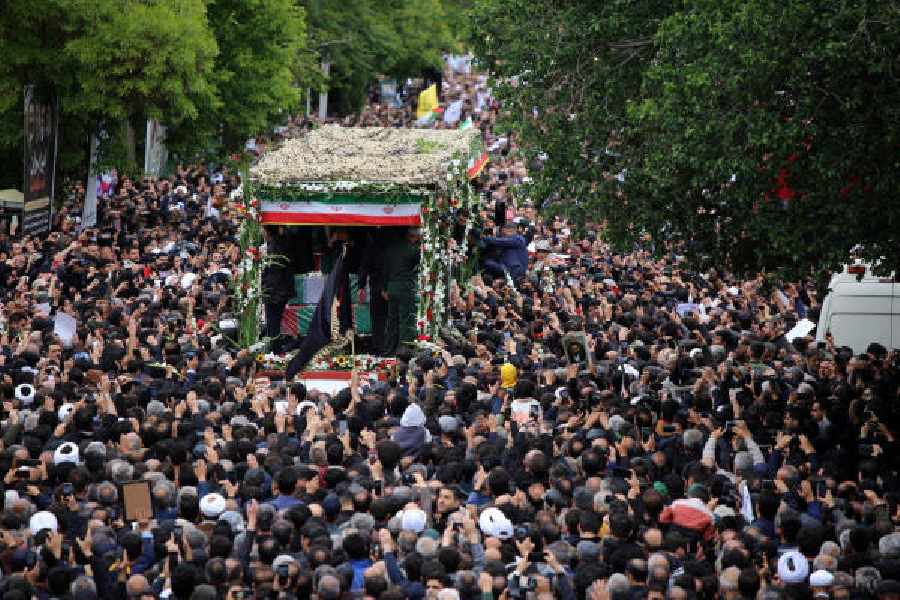Mourners in black began gathering on Tuesday for days of funerals and processions for Iran’s late President, foreign minister and others killed in a helicopter crash, a government-led series of ceremonies aimed at both honouring the dead and projecting strength in an unsettled West Asia.
For Iran’s Shia theocracy, mass demonstrations have been crucial since millions thronged the streets of Tehran to welcome Grand Ayatollah Ruhollah Khomeini in 1979 during the Islamic Revolution and also attended his funeral 10 years later.
An estimated 1 million turned out in 2020 for processions for the late Revolutionary Guard Gen. Qassem Soleimani, who was slain in a US drone strike in Baghdad.
Whether President Ebrahim Raisi, foreign minister Hossein Amirabdollahian and others draw the same crowd remains in question, particularly as Raisi died in a helicopter crash, won his office in the lowest-turnout presidential election in the country’s history and presided over sweeping crackdowns on all dissent.
Prosecutors have warned people over showing any public signs of celebrating his death and a heavy security force presence has been seen in Tehran since the crash.
But Raisi, 63, had been discussed as a possible successor for Iran’s supreme leader, the 85-year-old Ayatollah Ali Khamenei. His death now throws that selection into question, particularly as there is no heir-apparent cleric for the presidency ahead of the planned June 28 elections.
“Raisi’s death comes at a moment when the Islamist regime is consolidated,” wrote Alex Vatanka, an Iran expert at the Middle East Institute. “In short, there will be no power vacuum in Tehran; nonetheless, post-Khamenei Iran suddenly looks far less predictable than it did just a few days ago.”
A procession on Tuesday morning led by a semi-truck carrying the caskets of the dead slowly moved through the narrow streets of downtown Tabriz, the closest major city near the site of the crash Sunday. Thousands in black slowly walked beside the coffins, some throwing flowers up to them as an emcee wept through a loudspeaker for men he described as martyrs.
The bodies will travel on to the holy Shia seminary city of Qom before travelling to Tehran later on Tuesday.
On Wednesday, a funeral presided over by Khamenei will then turn into a procession as well.










